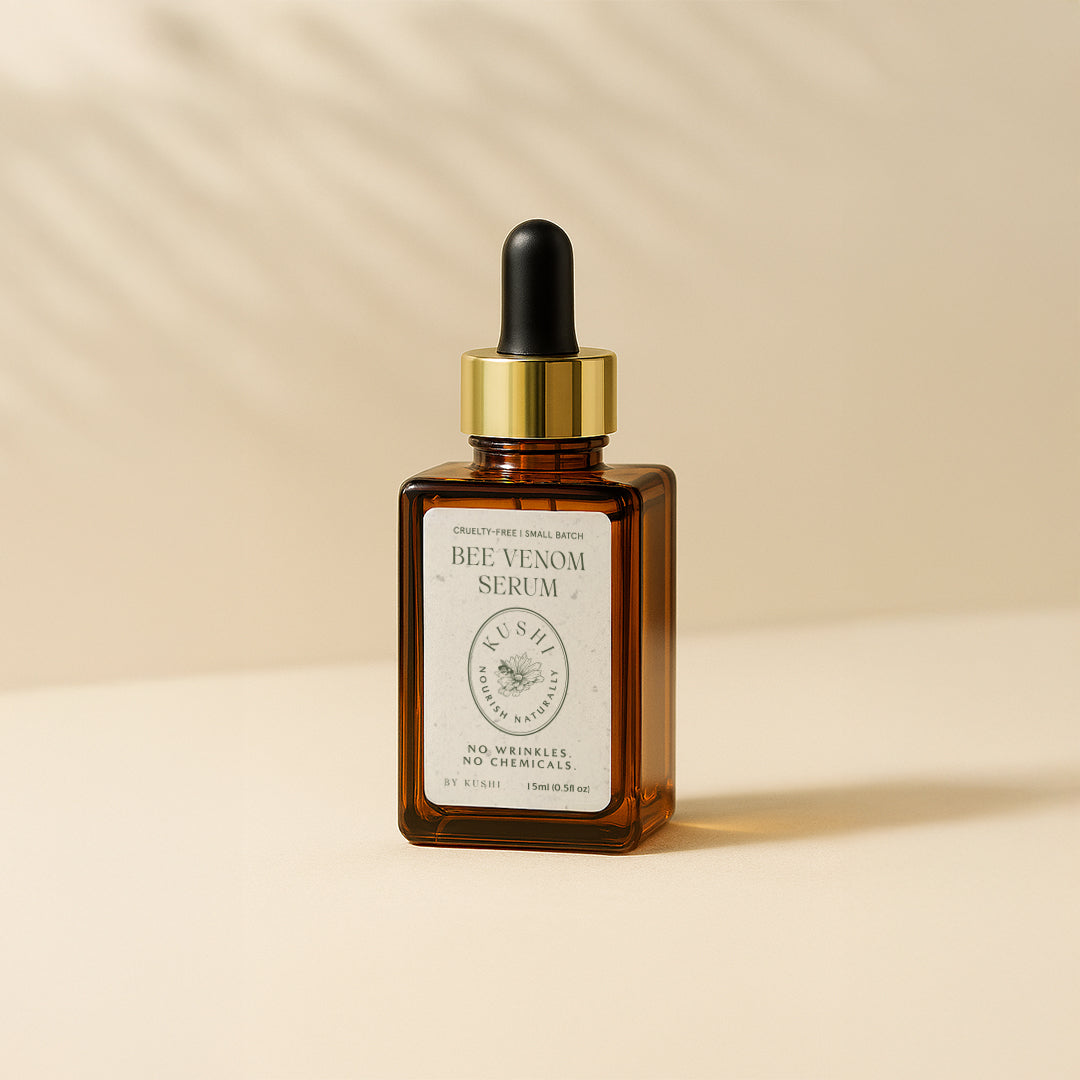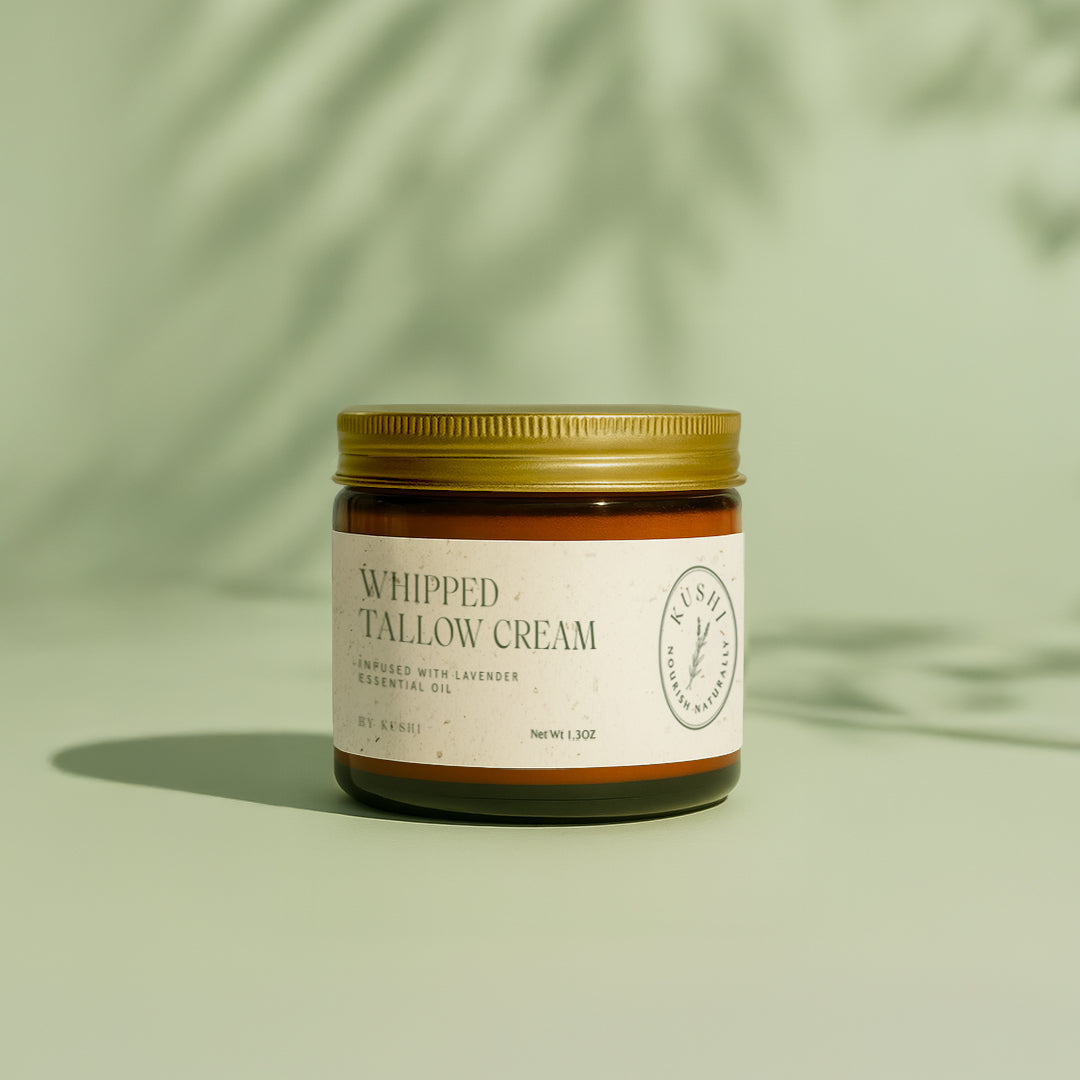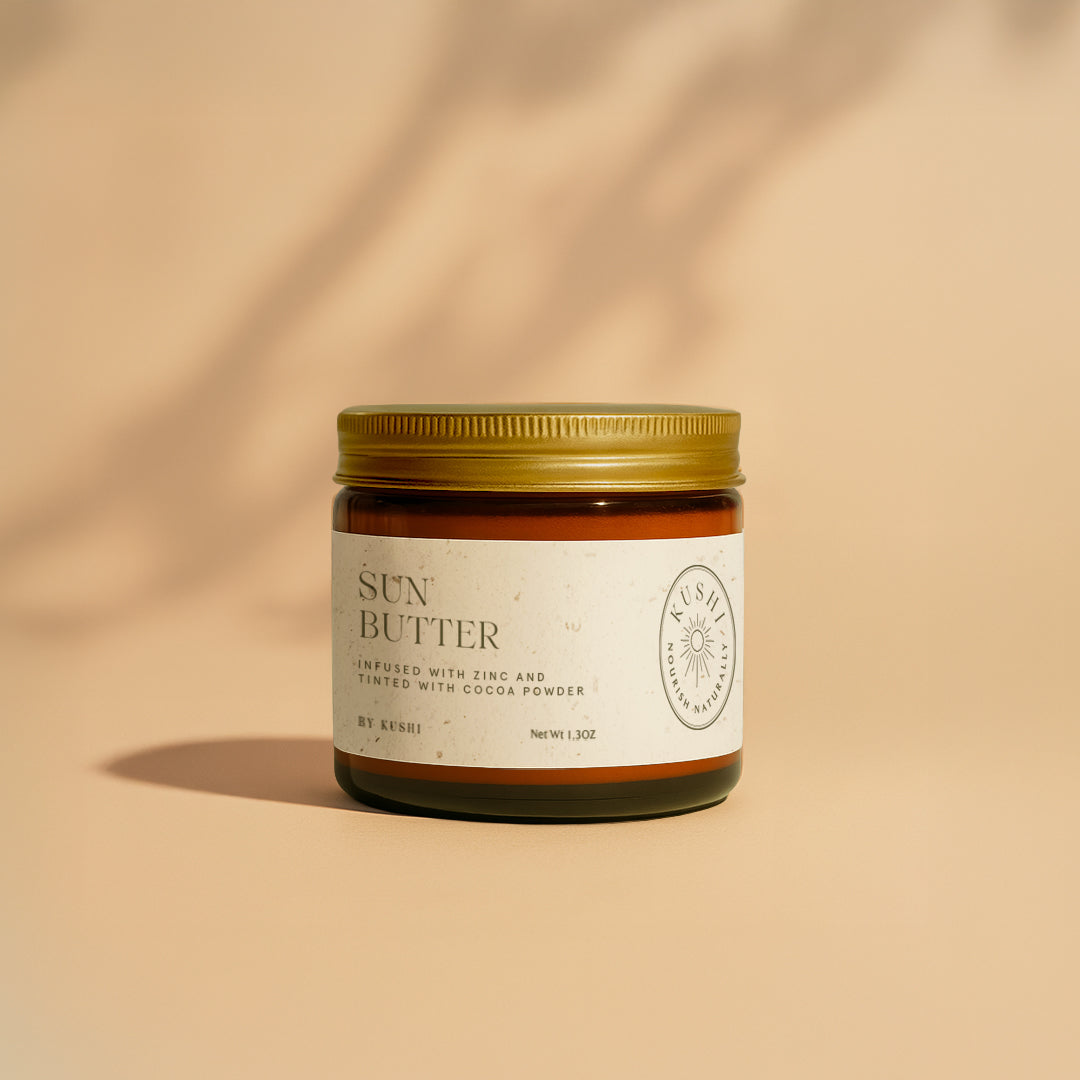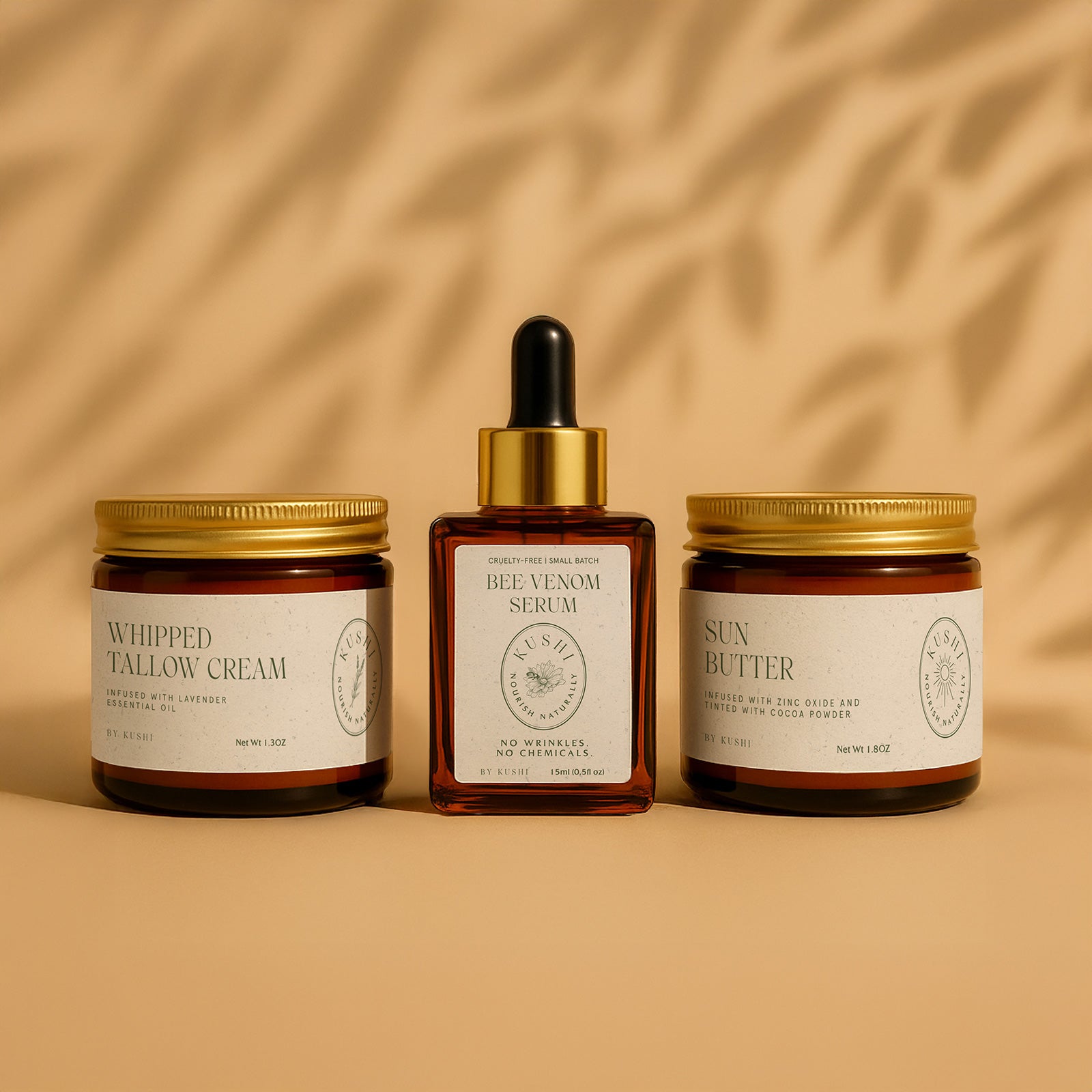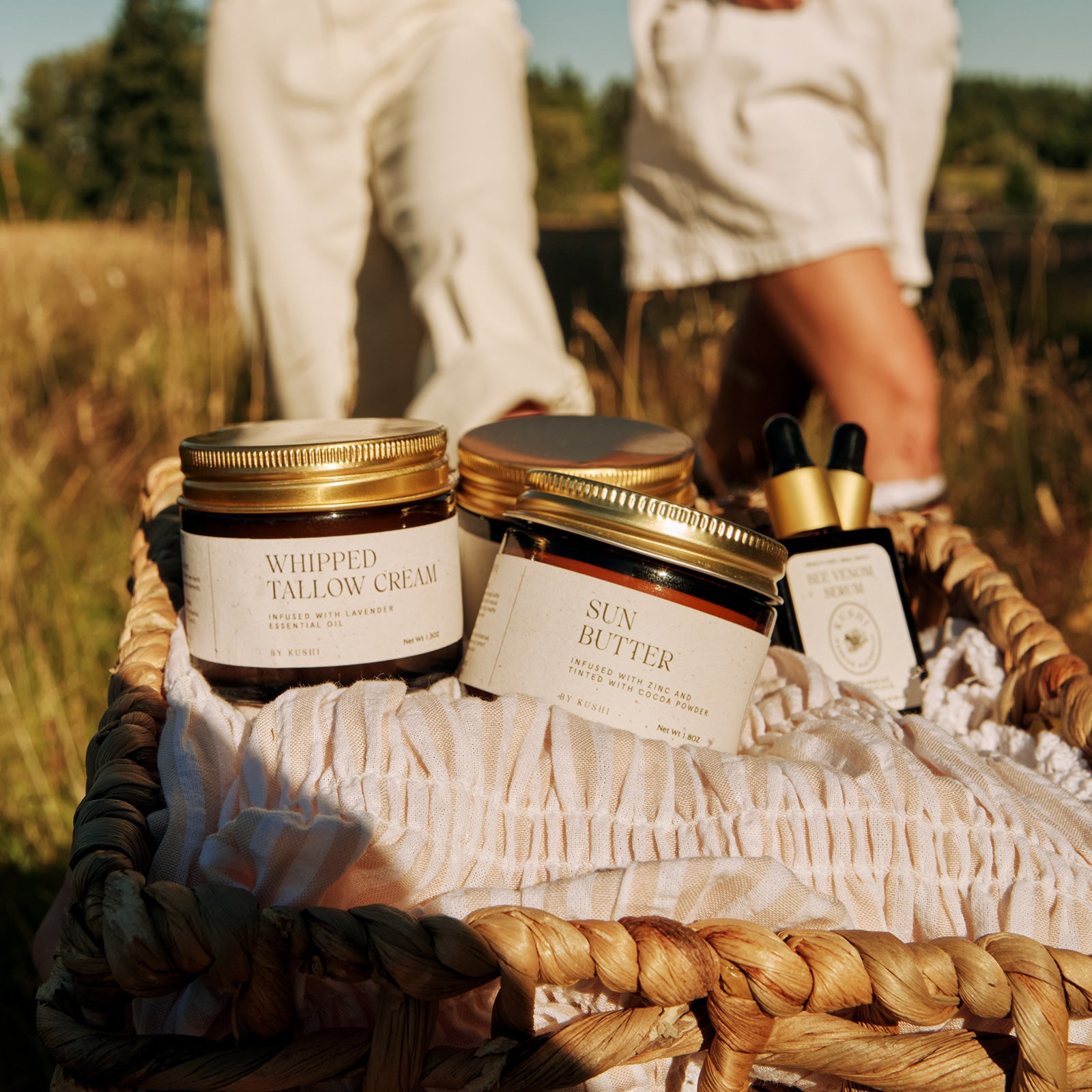Grass Fed Tallow For Skin
Grass fed tallow for skin gives deep, simple moisture. It mirrors your skin’s own oils, so it sinks in fast and helps your barrier hold water. It feels cushioned, not heavy. Many people choose grass fed beef tallow for skin when other creams fall short.
4.7 / 5.0
(197) 197 total reviews
Whipped Tallow Cream
Our best-selling grass-fed Whipped Tallow Cream, is a premium, natural moisturizer rich in Vitamins A, D, E, and K. Its gentle formulation makes it an ideal solution for various skin concerns, including dry skin, eczema, psoriasis, rosacea, and acne.
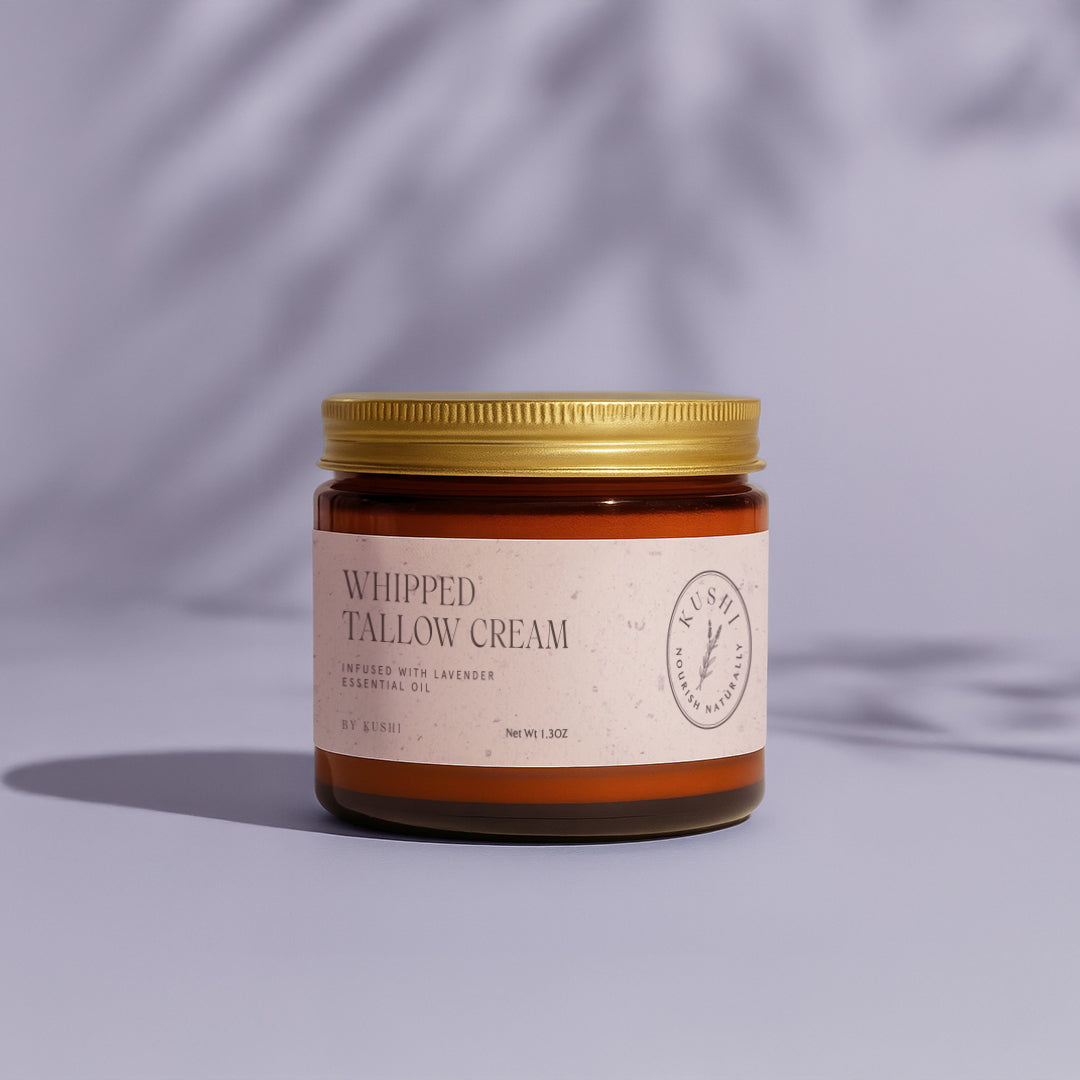
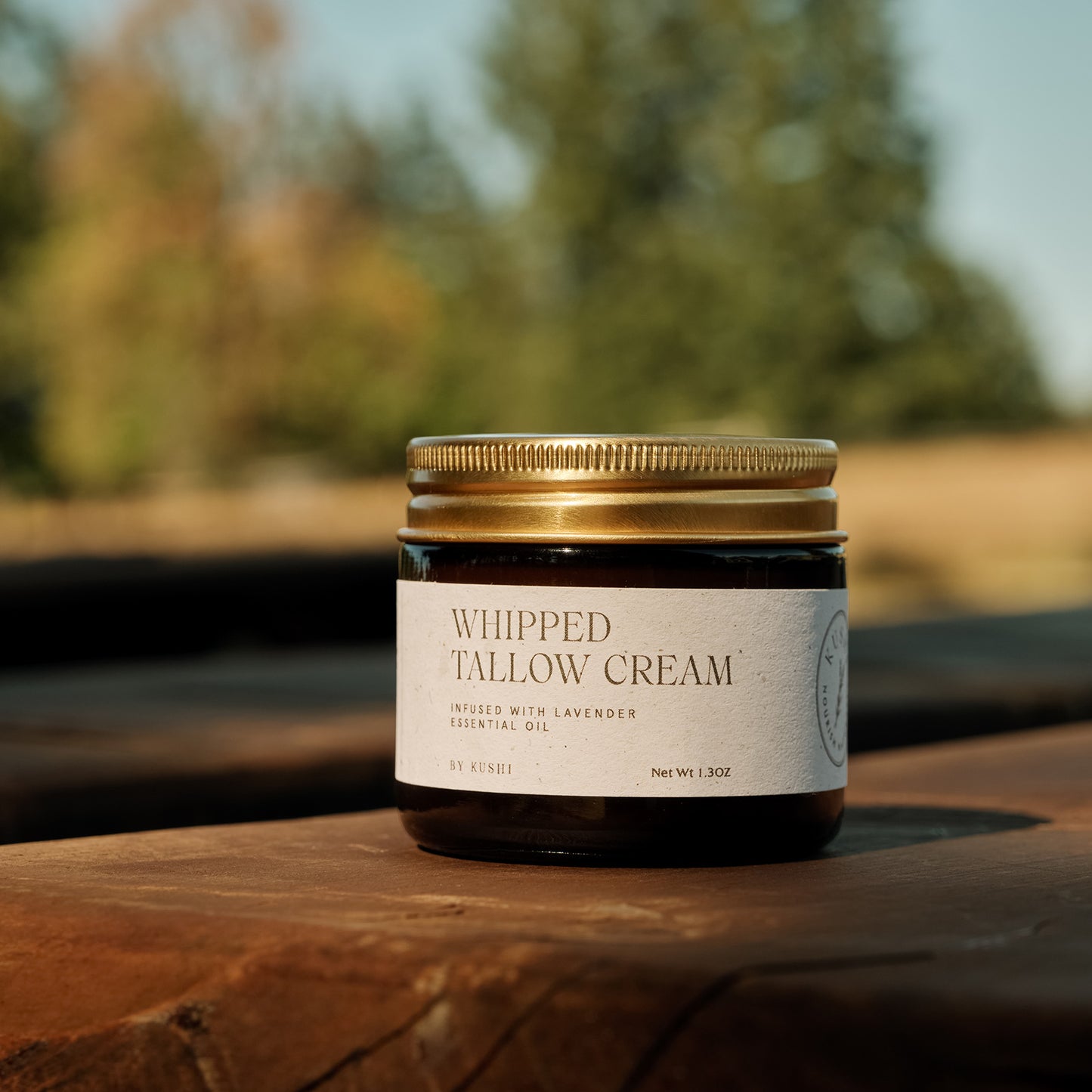
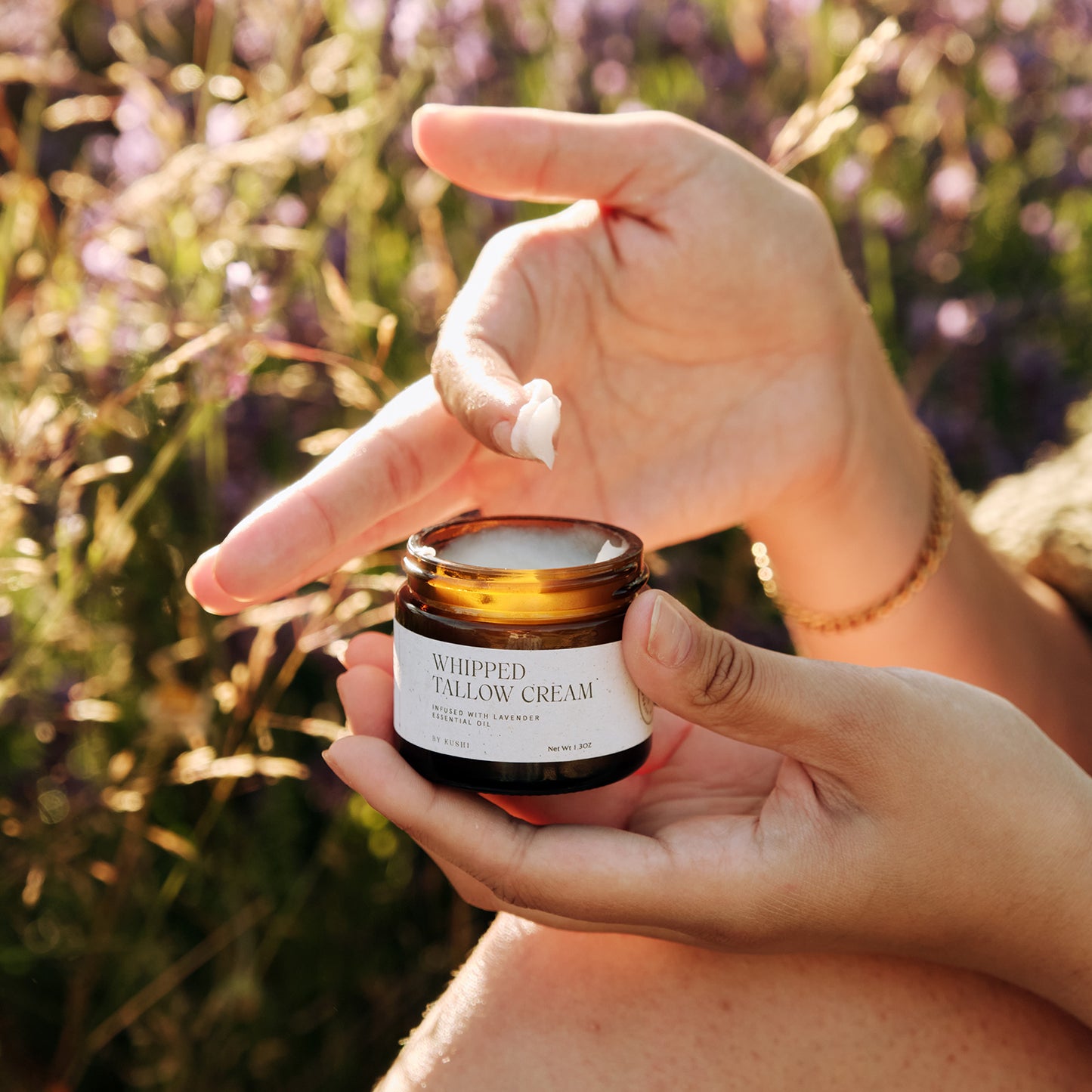
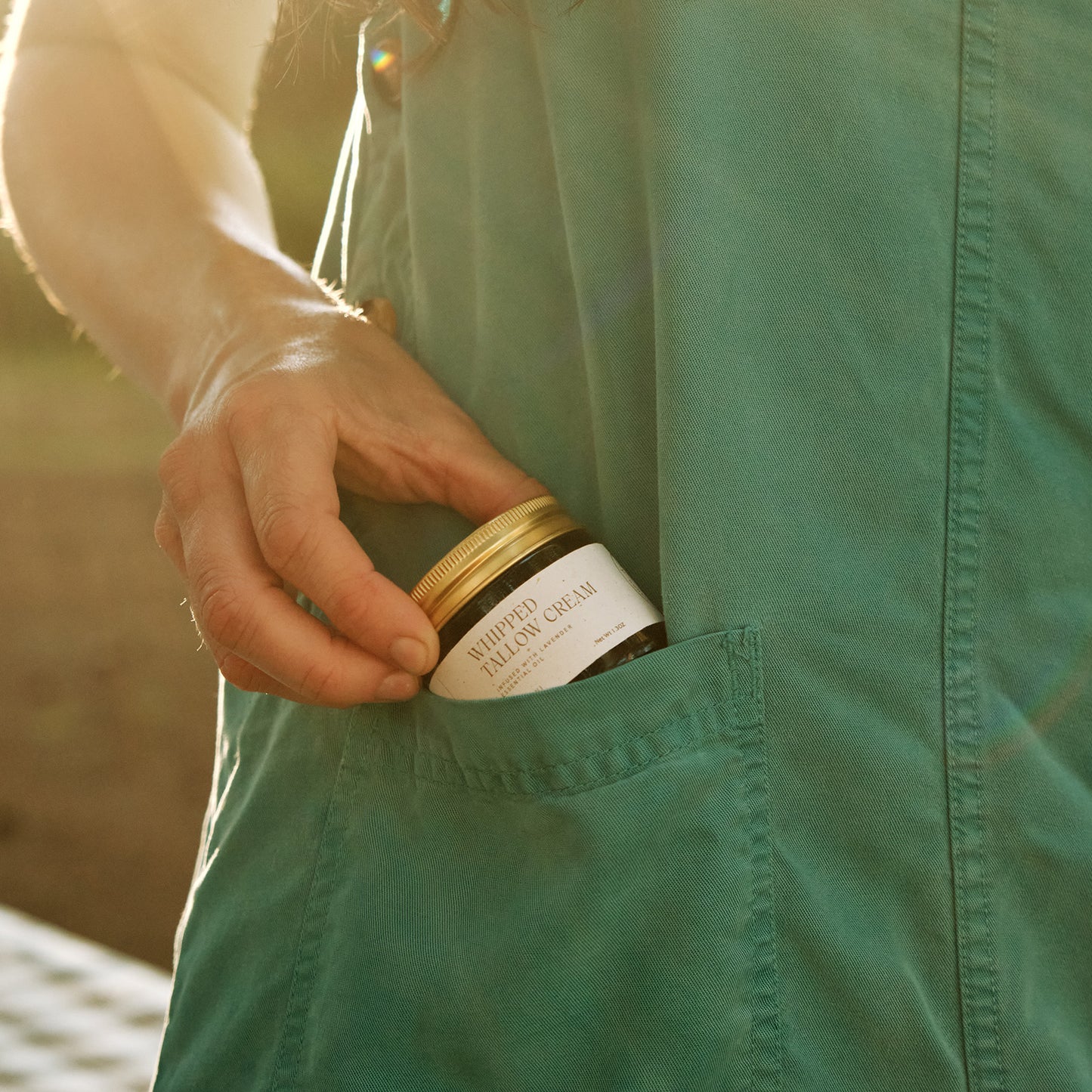
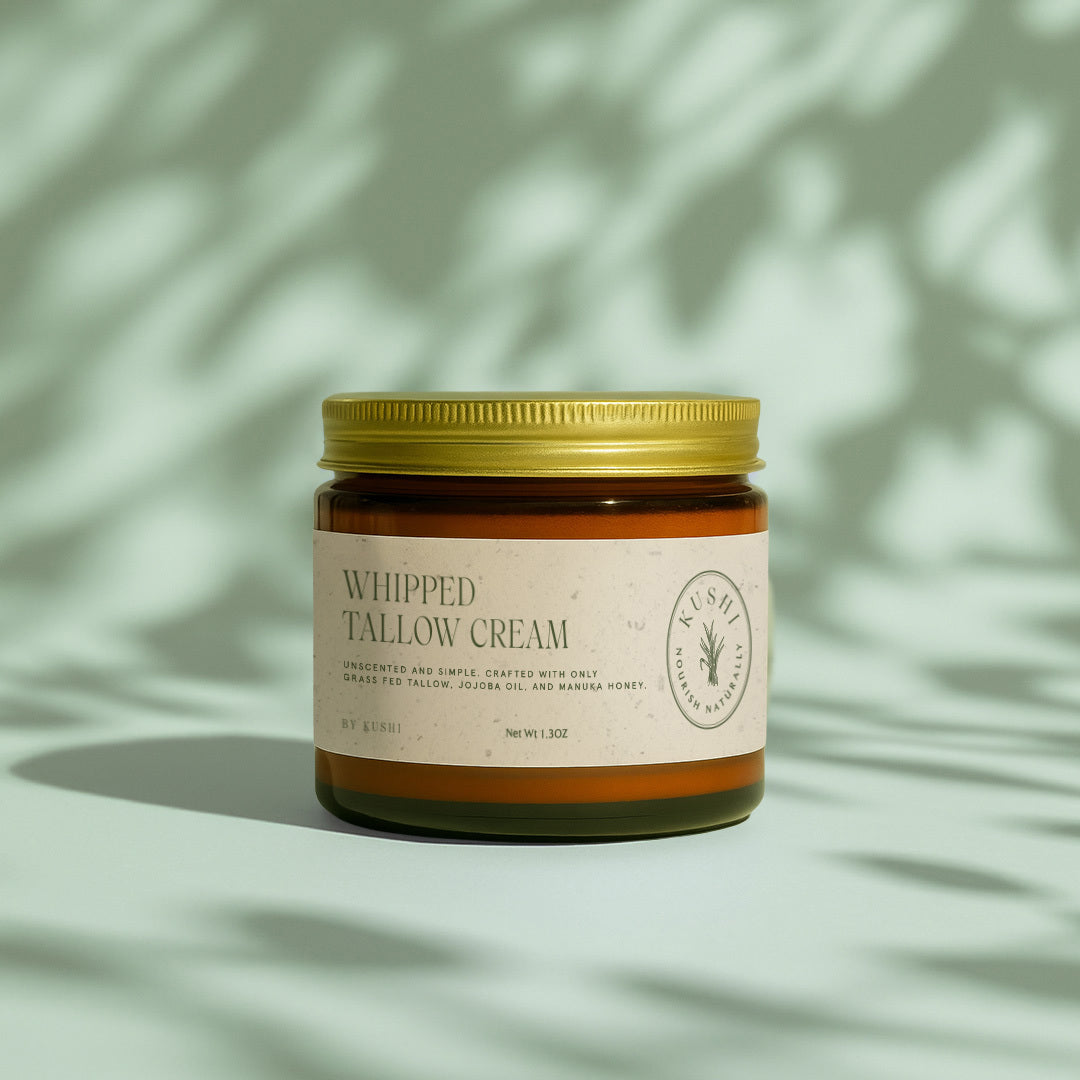
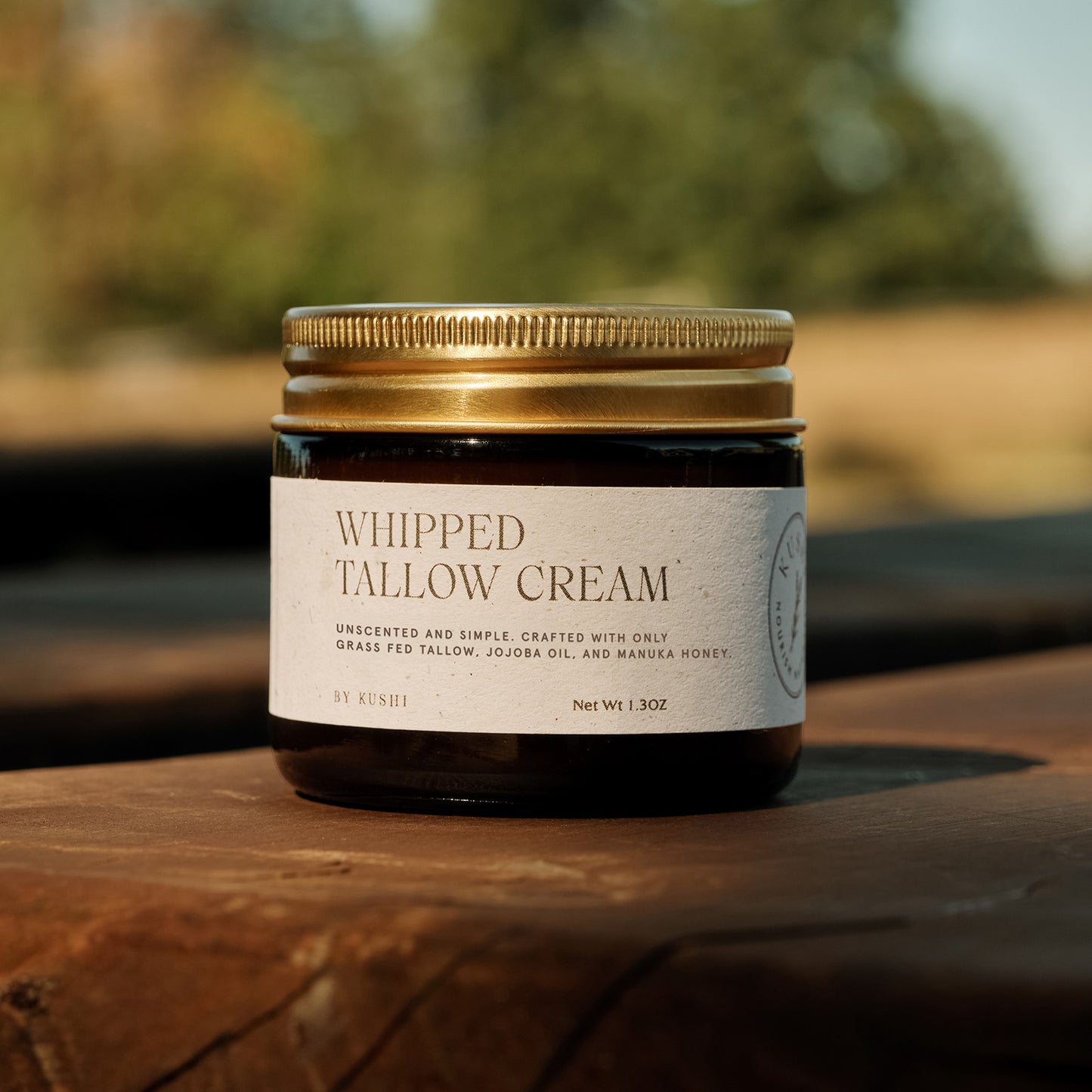
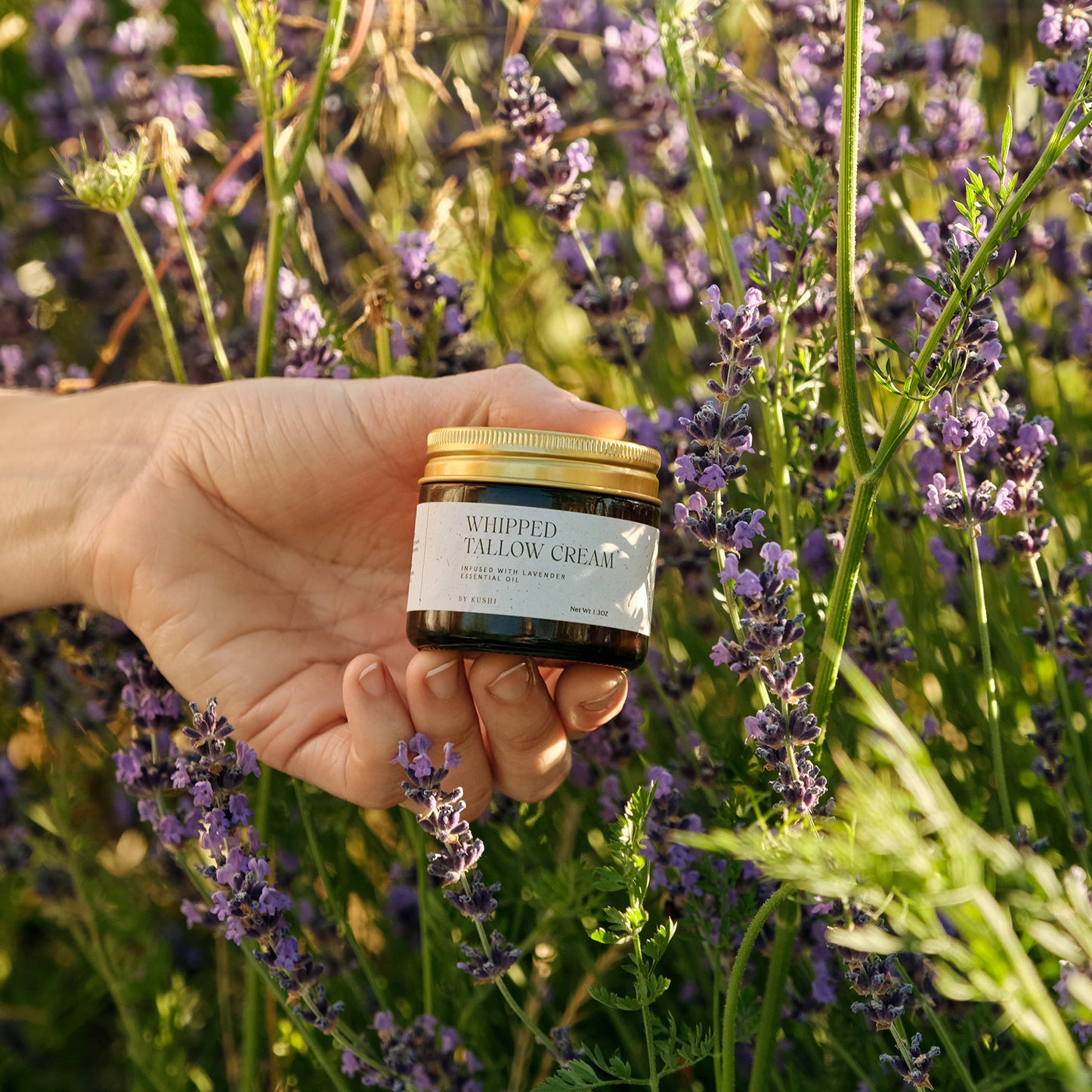
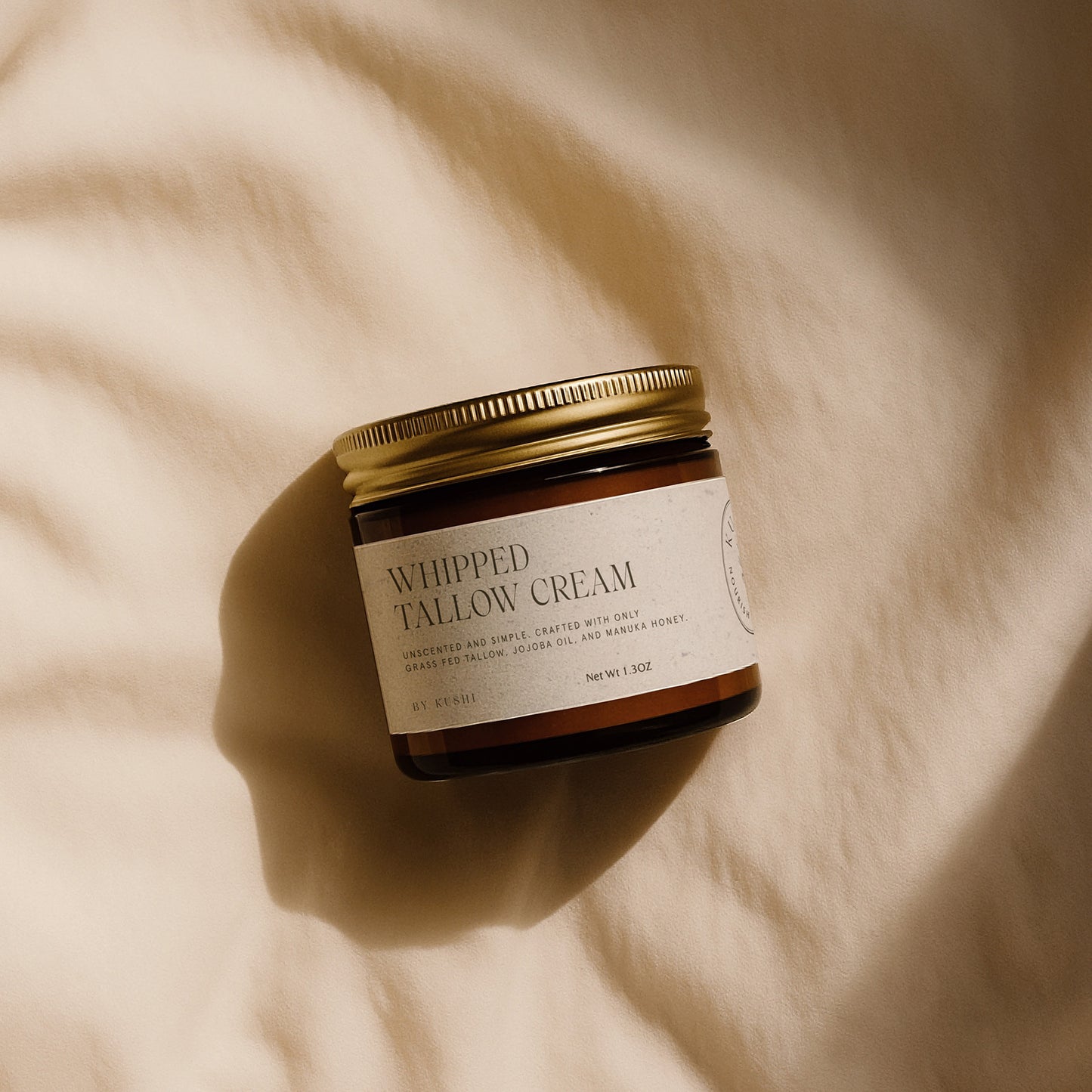
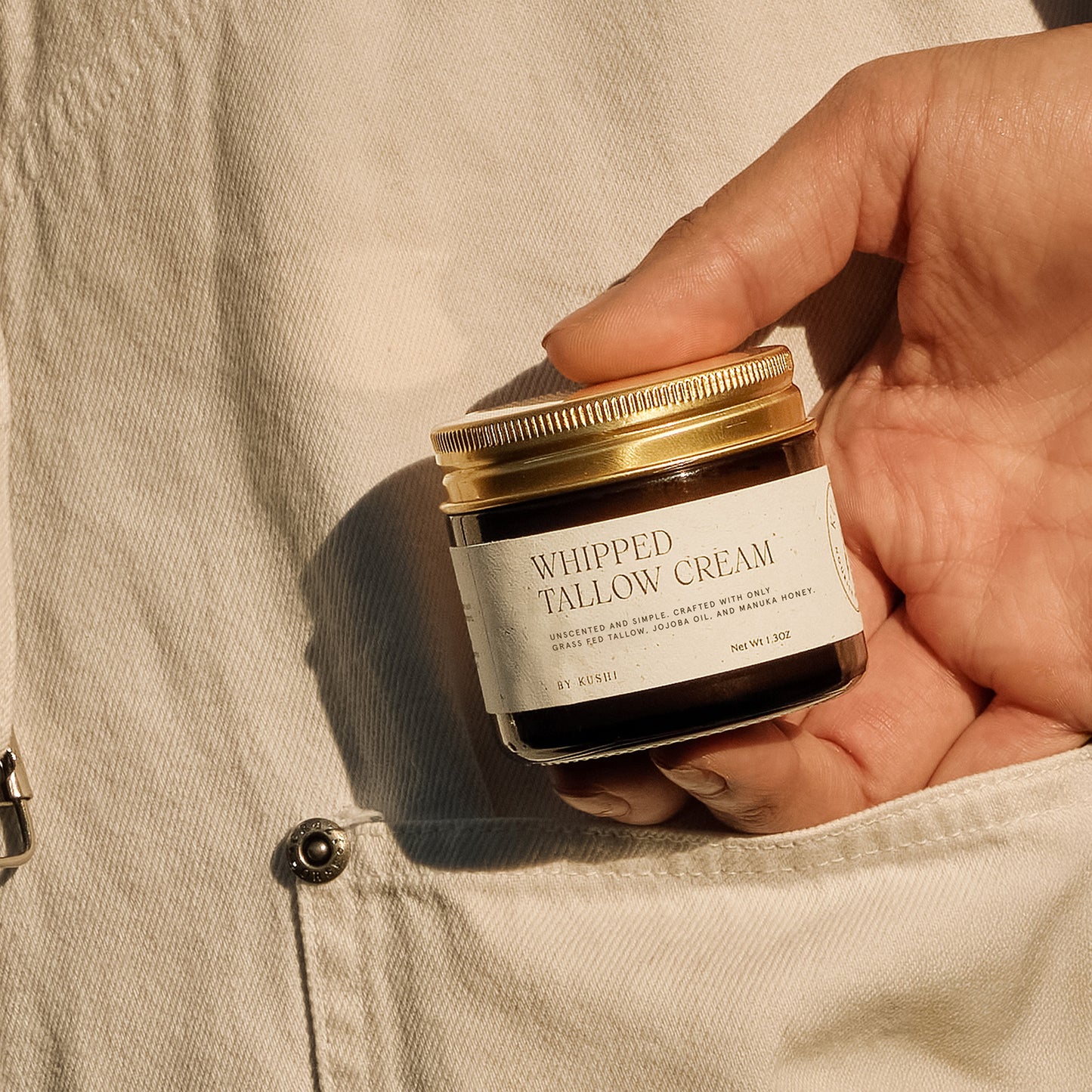
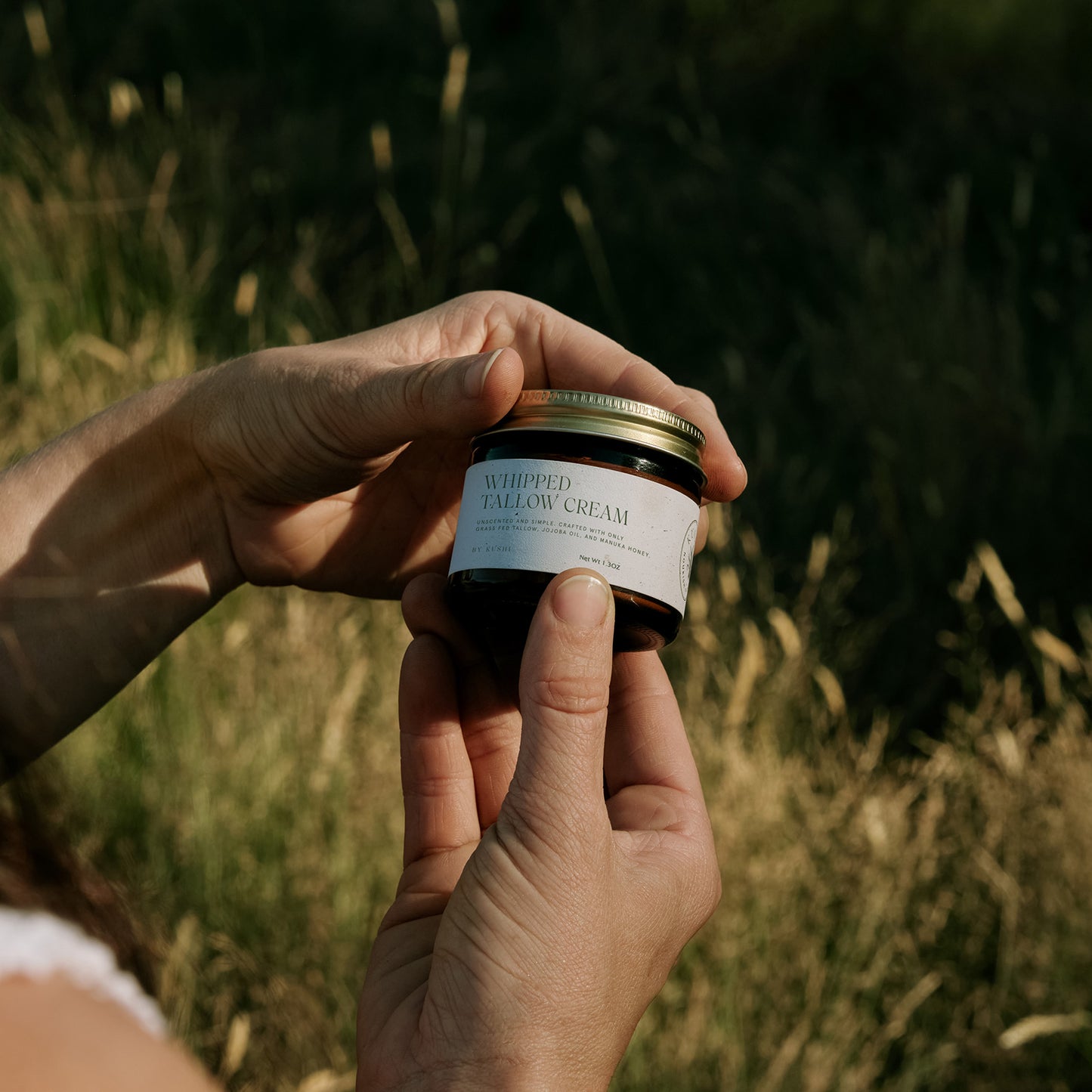
What Is Grass‑Fed Tallow?
Grass‑fed tallow is purified fat from pasture‑raised cattle. Its fatty acids are close to human sebum. That is why it spreads easily and absorbs without a heavy film. It brings vitamins A, D, E, and K along with antioxidants.
Why Choose Grass‑Fed Over Conventional?
Grass‑fed and finished sourcing usually has a cleaner profile. Pasture‑raised diets often yield tallow with a neutral scent and a lighter, silkier feel. Careful filtration reduces impurities and keeps texture consistent from batch to batch.
Low‑heat, slow rendering helps protect natural vitamins A, D, E, and K, along with antioxidants. At skin temperature, quality tallow softens fast, so a pea‑sized amount melts between your fingertips and spreads in a thin, even layer. It absorbs without a waxy film and settles into a cushioned, comfortable finish. The result is lasting comfort and a calmer‑feeling barrier.
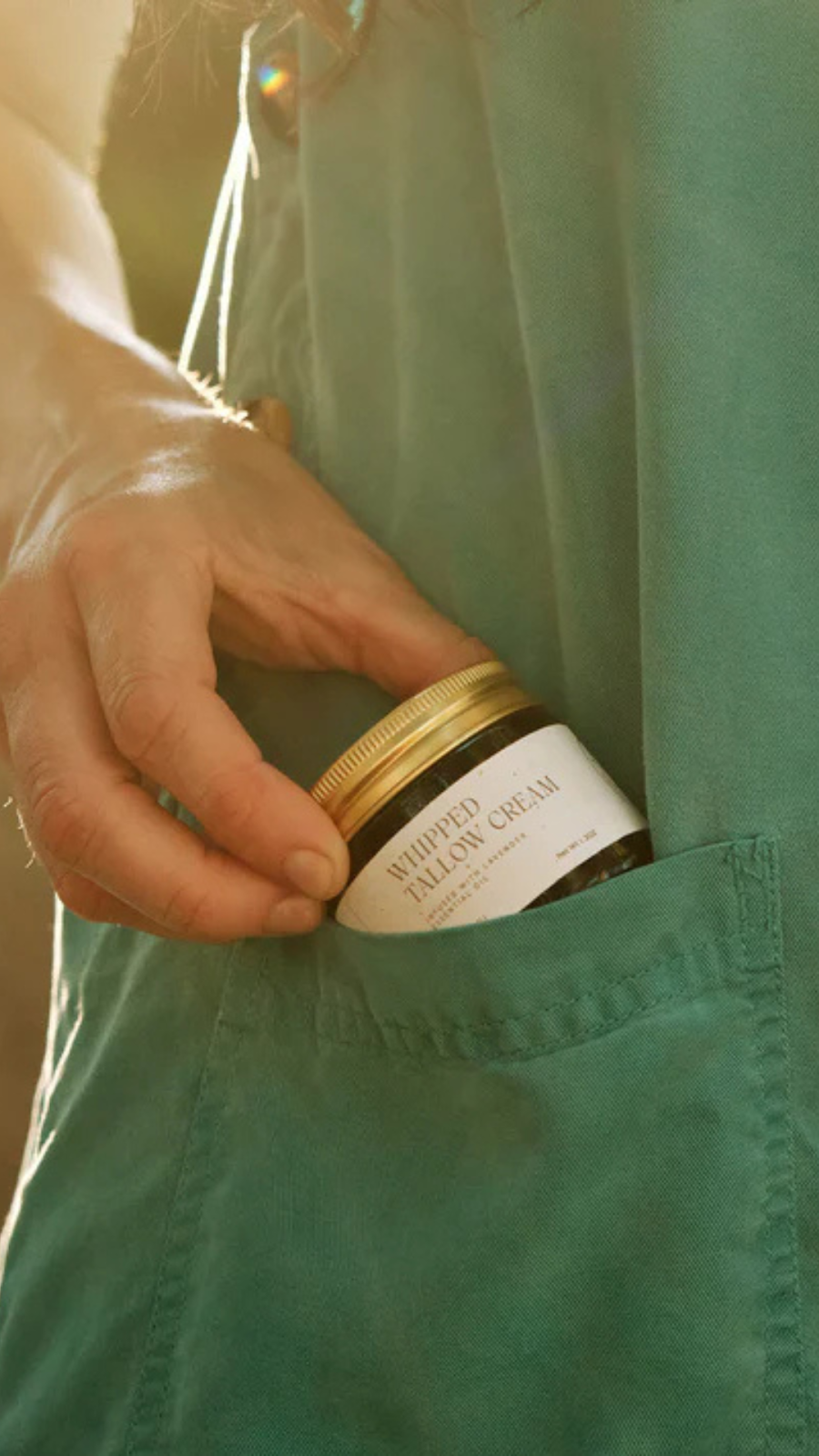
Benefits Of Tallow For Your Skin
Grass fed tallow for skin feeds your barrier with skin‑like lipids, so moisture stays in and tightness fades. It softens dry patches and leaves a cushioned, not greasy, finish. Many people notice less redness and a calmer feel within days. Because grass fed beef tallow for skin is simple and gentle, it fits into most routines and works on both face and body. Use it daily to keep skin smooth, comfortable, and resilient.
- Moisturize: Bio‑similar lipids fill gaps between skin cells and slow water loss. Skin feels soft and bouncy.
- Protect: It creates a breathable layer that shields from wind and dry air. Your face stays comfortable longer.
- Soothe: Less noise, fewer extras. Skin looks calmer and less blotchy.
- Restore: With steady use, the barrier feels stronger. Texture looks smoother over time.
Who It Helps
Dry or mature skin needs lipid‑rich care. Grass fed tallow for skin delivers that care in a simple way. Sensitive or reactive skin often prefers short ingredient lists. It also works well on body rough spots like elbows, heels, and hands.
How To Use It
Start with clean, slightly damp skin. Warm a pea‑sized amount between your fingers. Press it in and add a tiny bit more only where you feel dry. For body care, use more and glide it over rough areas.
Layering With Other Skincare
Keep routines simple. Use water‑based serums first, let them sink in, then seal with tallow. In the morning, finish with your chosen daytime protection. At night, you can use a very thin layer before and after strong actives to buffer dryness.
How To Choose A Quality Tallow
Start with grass‑fed and finished, pasture‑raised sourcing. Choose brands that share farm partners, batch dates, and rendering details. Low‑heat, slow rendering helps keep nutrients intact. Avoid harsh bleaches, deodorizing agents, or chemical solvents.
Keep the label short and readable. Five to seven ingredients is plenty. If you have sensitive skin, pick an unscented option. If there is an aroma, it should come from gentle, clearly listed ingredients.
Assess texture and look. Quality grass fed tallow for skin feels soft and airy, not waxy. Quality grass fed beef tallow for skin should melt at body temperature and spread in a thin, even layer. Color may range from pale ivory to cream. The scent should be mild and clean, never smoky or rancid.
Favor small batches and fresh stock. Opaque or amber glass helps protect the formula. Store it cool and dry, away from heat and sun. Choose a jar you can finish in three to six months.
If you want the best grass fed tallow for skin, weigh ethics and transparency too. Look for cruelty‑free commitments and clear testing practices. Brands that publish sourcing and processing standards are easier to trust.
Safety And Patch Testing
Most people find grass fed beef tallow for skin gentle and comfortable. If you are acne‑prone or very sensitive, patch test on the jawline first. Introduce it a few nights a week, then build up. Adjust the amount with the seasons.
Tallow For Different Skin Types
Every skin type can use grass fed tallow for skin. Dry skin loves the richer feel and steady comfort. Skin looks less tight and flaky. Sensitive skin likes the short labels and gentle finish. Fewer extras mean fewer chances to react. Combination skin can use more on the cheeks and less on the T‑zone.
Oily skin can still benefit in small amounts at night. Warm a pea‑size, then press a whisper‑thin layer into damp skin. Mature skin enjoys the cushioned feel and soft look. Grass fed beef tallow for skin adapts to seasons and stress. Start small, then adjust the amount as your skin changes.
Seasonal Skincare With Tallow
Your skin’s needs shift with weather. In winter, air is dry and harsh. Use a touch more and seal it over damp skin. In spring, ease back as humidity rises. In summer, keep the application light and focus on the cheeks. Let it settle before daytime protection.
In fall, watch for wind and indoor heat. Add a tiny second layer to dry spots at night. The best grass fed tallow for skin makes these switches easy. It spreads thin, sinks in fast, and stays comfortable. Simple changes in amount can keep your skin steady all year.
How Tallow Compares To Plant Oils And Butters
Plant oils and butters can feel great. They vary a lot in weight and slip. Some feel glossy but sit on top. Others feel dry and vanish too fast. Grass fed tallow for skin feels more skin‑like. Its fatty acids are close to your own sebum. That is why a small amount goes a long way. It melts at body temperature and spreads thin. The finish feels cushioned, not waxy. If many plant oils felt heavy or random on your face, try tallow. You may find the texture more stable day to day. Keep both if you like, and use what feels best.
Using Tallow With Active Ingredients
You can pair tallow with common actives. Keep steps simple to avoid overload. Use water‑based serums first. Let them sink in fully. At night, apply your retinoid or exfoliating acid on clean, dry skin. Wait a few minutes. Then press a thin layer of grass fed tallow for skin on top. If you feel dry, place a thin layer under the active as well. Many people call this a buffer. It softens the feel of strong steps. If your skin reacts, drop back to every other night. Focus on barrier care until things feel calm again.
Troubleshooting: When It Feels Too Heavy
If your face feels slick, adjust the method. Use less product. Warm it well between your fingers. Press, do not rub. Apply on damp skin, not wet skin. Give it a minute to settle. Skip your T‑zone if it runs oily. Use it only at night for a week. Then try a tiny amount in the day. If layering, let each step dry down first. Choose an unscented option if your skin is reactive. Grass fed beef tallow for skin should feel cushioned, not sticky. Small tweaks usually fix the feel fast.
Storage, Shelf Life, And Care
Treat your jar with care so it stays fresh. Keep it cool, dry, and out of sun. Close the lid tight after each use. Use clean, dry hands or a spatula. Avoid getting water into the jar. Store it away from steam or hot cars. A small, opaque or amber jar is a smart pick. Opened product is best within three to six months. Watch for changes in scent or color. If it smells smoky or rancid, replace it. The best grass fed tallow for skin looks creamy and smells mild. Good storage helps it stay that way.
Head‑To‑Toe Body Care With Tallow
Tallow is not just for your face. Use it on hands after washing. It keeps skin soft between tasks. Work it into cuticles to reduce snagging. Smooth a small amount over elbows and knees at night. Massage into heels and cover with socks. Tap a rice‑grain size onto lips as needed. Soothe tight shins after shaving. Glide a little on dry arms before bed. Grass fed tallow for skin makes a simple body routine. It spreads well and leaves a clean, soft finish. One jar covers a lot of ground.
Tallow And Makeup: Wear And Removal
Grass fed tallow for skin can sit under makeup if you keep the layer thin. Start with clean, slightly damp skin and press in a pea‑size or less. Give it one full minute to settle. If you see slip, use even less. The aim is a soft, cushioned surface, not shine. Cream and stick formulas often glide well over this base. Powder can also sit smoothly because dry patches look less raised. If you notice pilling, reduce the amount or let each step dry down longer.
For touch‑ups, blot first and then add a tiny tap only where you feel dry. Do not rub or stack heavy layers. Grass fed beef tallow for skin is rich, so a little must do a lot. At night, remove makeup with a gentle cleanser. Rinse well and pat skin damp. Seal with a fresh, small amount of tallow and go to bed comfortable. If you prefer an oil‑based first cleanse, keep it simple and follow with your usual cleanser. The best grass fed tallow for skin supports a smooth look with minimal steps and no extra fuss.
Read Also:
Frequently Asked Questions
Is grass fed tallow good for the face?
Yes. Its fatty acids are similar to your own sebum, so it absorbs well. Use a tiny amount and build slowly. Most people find it cushions skin without a greasy feel.
Can I use it on oily or combination skin?
You can. Apply a whisper‑thin layer on damp skin and keep the T‑zone light. Add a touch more only on dry cheeks. Adjust with weather and hormones.
Will tallow clog pores?
Pure, well‑purified tallow is unlikely to clog pores when used sparingly. Because it is bio‑similar, it tends to balance rather than sit on top. Patch test if you are acne‑prone. Start a few nights per week and watch how your skin responds.
What makes the best grass fed tallow for skin?
Look for grass‑fed and finished sourcing and short labels. Low‑heat processing helps preserve nutrients. The best grass fed tallow for skin melts at body temp and spreads thinly. Avoid heavy perfumes and long INCI lists.
How do I layer it with other products?
Apply water‑based steps first. Seal with a thin layer of tallow. In the morning, add your chosen daytime protection as the last step. Keep the routine minimal to avoid overload.
Can I use it around the eyes and on lips?
Yes. Tap the smallest amount onto damp skin to avoid tugging. For lips, use a rice‑grain size. Reapply as needed.
